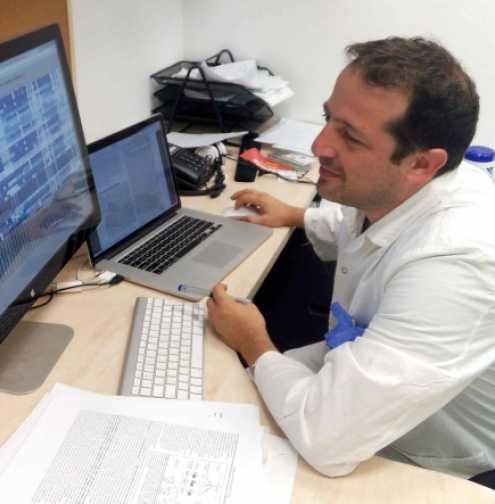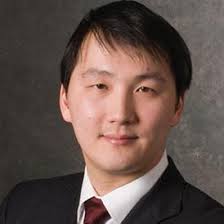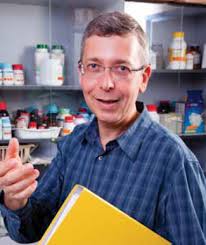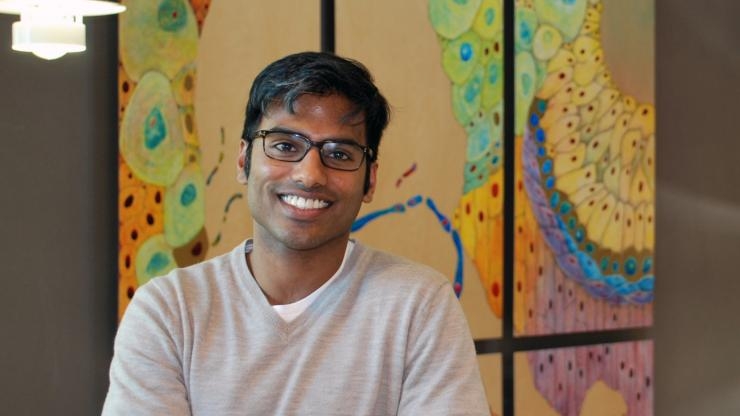
Bergmann Memorial Award Winners
Two teams of young researchers explore cancer cells and iron
The human body is filled with cells and iron. When they function normally, they are key factors in a person’s health. But abnormalities can lead to a host of serious illnesses. Two teams of gifted young researchers are determined to discover more about our cells and how iron effects health, and they are the latest recipients of BSF’s Bergmann Award. Named in memory of Professor E.D. Bergmann, who played a leading role in establishing the BSF, the award is presented to young scientists and researchers who are recipients of new BSF grants and judged on the quality of their proposals. The winners for 2018 are:
- Yuval Tabach of the Hebrew University-Hadassah Medical School, and Timothy K. Lu of M.I.T, for their work on cancer cell lines, and
- Daniel Kornitzer of Technion – Israel Institute of Technology, and Amit R. Reddi of the Georgia Institute of Technology, for their examination of a common fungus known for causing infections and rashes.
In addition to the BSF grants they are already receiving, the Bergmann Award comes with additional funding that will help them develop their projects further.
Exploring how cancer cells differ from healthy cells

Although much progress has been made, science still has a long way to go in determining how cancer cells differ from healthy cells. Yuval Tabach of the Hebrew University-Hadassah Medical School and Timothy K. Lu of M.I.T. are attempting to solve that mystery, and their findings could prove substantial in efforts to detect and treat cancer.
Their focus is on gene expression, which is controlled by small stretches of DNA called promoter motifs. These motifs are turned on or off largely by the activity of transcription factors (TFs), which are proteins that physically bind to the promoters, initiating, stopping, or modulating gene expression. The difference in promoter motif activity among cells largely determines gene expression and cell identity.
By combining methods in synthetic biology and computational biology, Tabach and Lu are attempting to identify the entire landscape of active and inactive promoter motifs in each kind of cell. This map will help to reveal TF activity and regulation of gene expression in, for example, a breast cancer cell, compared to a healthy cell.

Furthermore, within tumors there are two cell types: cancer stem cells and non-stem cells. Cancer stem cells are particularly aggressive in advancing tumor growth. This is why Tabach and Lu are especially interested in how these two types of cells differ. The researchers anticipate that a complete map of transcriptional activity (showing which TFs bind to which promoters) will uncover networks of gene expression whose points of intersection overlap, and divergence will provide promising targets for new cancer therapies.
“Overall in this project we will develop a new and unbiased approach to map, identify, and control distinct promoter motifs that control various aspects of cancer development,” said Tabach, adding that the Bergmann grant money will allow one of the top computational medical students on his team to travel to the United States and work face-to-face with Lu’s team.
Tracing the path of a common fungus

Iron is an essential element that participates in many essential cellular functions in virtually all living organisms. Iron as part of heme, a molecule that is almost always bound to protein molecules such as hemoglobin, the oxygen-binding protein of blood. Daniel Kornitzer of Technion – Israel Institute of Technology and Amit R. Reddi of the Georgia Institute of Technology are focusing on the connection between iron and heme in order to learn more about a common intestinal fungus.
Most organisms are able to synthesize their own heme, but some are also able to take up external heme. Among the latter are pathogenic microorganisms that infect animal hosts. In biology and medicine, a host is an organism that attracts various types of “guests,” such as parasites.
In the host environment, invading microbes are confronted with very low iron levels. To proliferate, some of these pathogens utilize the abundant heme from hemoglobin as iron and heme sources. One such pathogenic microorganism is Candida albicans, a fungus normally found in the intestinal tract. It can also infect the bloodstream of individuals with weakened immunity, such as cancer patients or organ transplant patients. It can result in a number of annoying maladies, such as yeast infections, thrush and rashes.
In their research, Kornitzer and Reddi hope to clarify how Candida albicans takes up heme from the outside, and contrast the cellular heme distribution pathways of externally absorbed vs. internally synthesized heme.
“This research will shed light on the little understood mechanisms by which heme is transferred between the different parts of the cell,” Kornitzer said.

Kornitzer and Reddi formed their partnership after a chance meeting during a conference, where they shared their fascination with heme over a beer.
“We are both incredibly grateful for the unique funding opportunity the BSF has provided to foster our collaboration,” Reddi said. “Without it, our innovative studies would not have been supported and would be dead in the water.”
Reddi hopes that better understanding of this pathway will raise the prospect of developing new anti-fungal therapeutics, either by efficiently blocking heme uptake and utilization or introducing “Trojan horse” drugs that exploit the heme assimilation machinery.
The team plans to use the grant money from the Bergmann Award to fund the work of a post-doctoral researcher to help them continue their work.
“The recognition and opportunity that the Bergmann Award affords is incredibly gratifying,” Reddi said. “It is a testament to the amazing collaborative work that my colleagues and I have done and continue to do in understanding the biochemistry and cell biology of metals and metalloproteins.”
